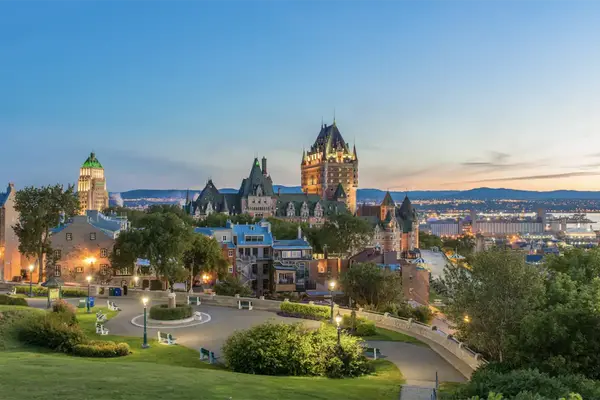Exploring the paradors of undiscovered Catalonia
Catalonia’s ancient towns and delicious delicacies are complemented by stays in historic Parador hotels, says Dave Richardson
Before going to bed at my hotel in Lerida, I wonder if I might have troubled dreams. The latest addition to the state-owned Parador hotel range is converted from a 17th century convent, and played a part in Catalonia’s turbulent history.
In 1707 during the War of Spanish Succession, 700 people were sheltering inside during a siege when the convent was set alight. The many who died are seen as martyrs and the suppression of Catalan nationalism after the war is still a live issue today.
Fortunately I sleep soundly, but when dining in the hotel’s grand domed restaurant (the former church) or walking the corridors of the old cloister, I do feel part of history. Many of the 98-strong Spanish Parador chain are converted from castles, convents, palaces or other historic buildings. As they can be found all over mainland Spain (plus a few in the Canary Islands), there’s no better way of discovering the country’s history, culture, gastronomy and traditions on a trip there.
INLAND EXPLORATION
While the Catalan capital of Barcelona and the resorts of Costa Brava and Costa Dorada are very well known among the Brits, inland Catalonia is much less visited. Yet it’s home to historic towns, great food and wine, and scenery ranging from plains to the Pyrenees Mountains. I pick up a hire car in Barcelona to discover more of the region.
Situated in a fruit and vine-growing region 100 miles west of Barcelona, the small city of Lerida was also on the front line during the Spanish Civil War of 1936 to 1939, when English author George Orwell, whose books include Homage to Catalonia, fought on the losing Republican side.
Catalonia is now involved in an independence movement from Spain, which is proving as bitter and divisive as Brexit, with riots in Barcelona last October after nine separatist leaders were jailed.
When I drive on to the small town of Cardona, about 60 miles north of Lerida, there are banners in the main square demanding the release of so-called political prisoners and yellow ribbon signs (a pro-independence slogan) everywhere.
My main reason for visiting Cardona, however, is to see its fairytale castle, perched on a rocky outcrop above the town. The castle is also home to another Parador, whose vaulted dining room has walls two feet thick. Our room looks out to an ancient courtyard, and we join a guided tour (10:30 daily in English) to learn more.
It’s worth clients taking the tour, particularly if they’re interested in history. They’ll see parts of the castle not open to hotel guests, including the Romanesque church of St Vicenc and an audio-visual display of the great siege of 1714.
We also visit nearby Salt Mountain, a salt mine for hundreds of years. I learn that the word salary comes from salt, as Roman soldiers were paid with it.
We visit in summer, when temperatures can hit 40C, so it’s a relief to drive about 60 miles north to La Seu d’Urgell (112 miles from Barcelona) in the Pyrenees, where it’s about 10 degrees cooler.
This is an excellent area to visit, with a museum, churches and a cathedral to discover. There’s also the option of driving a few miles into the principality of Andorra for tax-free shopping. La Seu is one of the main activity holidays centres in Spain, with ski resorts nearby and 30 sign-posted hiking routes.
The Parador here is modern, though built on the foundations of an ancient convent, and as at Lerida, right in the town centre. Although the Paradors appeal mainly to mature couples, a large party of young British canoeists is also in residence when I visit.
ESSENTIAL INFORMATION
Getting there: Car hire is recommended, flying in to Barcelona, Girona or Reus. Clients can also drive via France, or take Brittany Ferries’ routes to Santander or Bilbao from Portsmouth or Plymouth.
Best time to visit: Spring or autumn are usually warm, while summers can be very hot.
Language: Catalan, though many words and place names are similar to Spanish – Carrer rather than Calle for street, for example.
Food and wine: Paradors specialise in local cuisine and traditional recipes, with wines to match.
We drive up into the mountains to discover stone-built villages, beautifully set among forested slopes and rushing streams. Castellbo has a ruined castle while Ars has a 12th century Romanesque church.
After nearly a week of heat inland, we need some sea breeze and Catalonia has 175 miles of coastline stretching from the French border to beyond the resort town of Salou south of Barcelona, which is also home to Port Aventura theme park.
SAFE HAVEN
Despite the independence movement, everywhere we visit is totally relaxed. The unrest has not hit bookings for the Paradors either, according to its UK agent, Keytel International. Director Gary Drewett says: “Despite some high-profile news coverage, there is no safety concern for tourists generally. Driving is easy away from the traffic of Barcelona, and if you avoid the motorway you pass through lovely old towns.”
He adds that Catalonia is an easily accessible self-drive option. “Flights are plentiful, car hire is easy to add on, and a self-drive tour is easily assembled by us with tailor-made itineraries and commissionable prices quoted in pounds.”
With mountains, seaside, historical towns, remote villages, great gastronomy and fine wines – not to mention one of Europe’s great cities – Catalonia is what many of its people controversially want it to be, a country in its own right, and it’s one that’s ripe for exploring.
Book it: Prices for a double or twin room visiting in spring 2020 for two nights at each hotel start from £215 in Lerida, £260 in Cardona and £220 in La Seu d’Urgell, based on two sharing, including breakfast.
keytel.co.uk
Smarter: For history buffs, recommend Paradors housed in notable buildings rather than suggesting any of its recently built options.
Better: Check out recommended routes around the Paradors for clients interested in history, scenery, activities, gastronomy or wine.
Fairer: Some car hire firms are starting to introduce electric cars in Spain, and you can save carbon by taking the train – London to Barcelona, via Paris, takes about 10 hours.


















